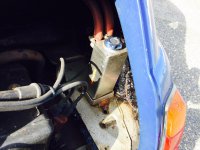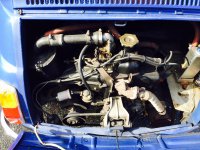Fayray
Member
- Joined
- Nov 6, 2017
- Messages
- 286
- Points
- 92
I have just joined the forum and have found it to be incredibly helpful. However, my Bambina still won't start
After constantly losing power after a short distance of driving I figured I might have a fuel starvation issue so ordered a carb service kit and removed the carb and gave it a good clean etc. At the same time I set the valve clearances and put it all back together. When I went to restart it all I got was a backfire and nothing else. I thought maybe I had the plug leads around the wrong way but reversing them didn't make a difference. So I rechecked the tappets and found I'd got them a bit wrong and reset them to the correct 0.15mm. However, I still just get a backfire and a few muffled pops and nothing else whilst cranking the starter. So next I thought I'd check the timing even though I hadn't touched anything that might've thrown it off. But when I look at the pulley there is no groove or mark on the edge that i can detect. So is the marker I need to use the one in this photo? There are two of these markers
After constantly losing power after a short distance of driving I figured I might have a fuel starvation issue so ordered a carb service kit and removed the carb and gave it a good clean etc. At the same time I set the valve clearances and put it all back together. When I went to restart it all I got was a backfire and nothing else. I thought maybe I had the plug leads around the wrong way but reversing them didn't make a difference. So I rechecked the tappets and found I'd got them a bit wrong and reset them to the correct 0.15mm. However, I still just get a backfire and a few muffled pops and nothing else whilst cranking the starter. So next I thought I'd check the timing even though I hadn't touched anything that might've thrown it off. But when I look at the pulley there is no groove or mark on the edge that i can detect. So is the marker I need to use the one in this photo? There are two of these markers




